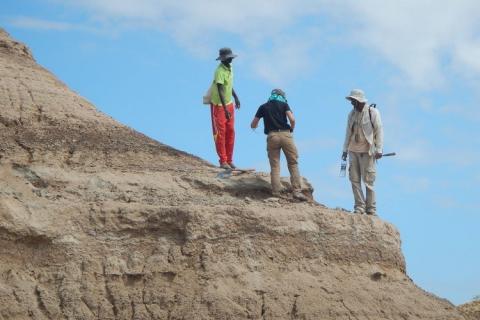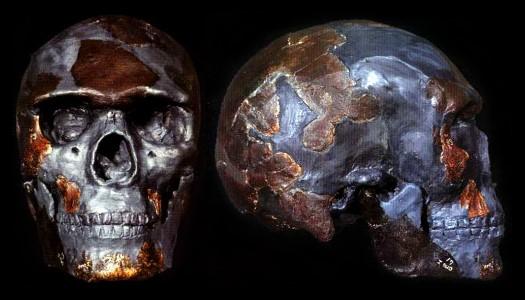How volcanic eruptions give us clues to our distant ancestry

Some fossils give paleontologists a very clear picture of how they were formed and how long ago the organism perished. Others are a bit murky and need to be reanalyzed as our dating techniques improve over time. Believe it or not, volcanic eruptions help place fossils within the geologic timeline depending on the properties of the source material such as lava, ash and pumice. Volcanic rocks contain potassium including potassium 40 (K-40) - a radioactive element. Radioactive elements change (or decay) into more stable elements (in this case Argon) over time. The ratio of how much K-40 there is compared to Argon in a sample pinpoints a date. Radioactive isotopes function similarly to a clock because they change over time at a predictable rate. The half-life of Potassium-40 for instance is 1.25 billion years which comes in very handy when dating fossils, especially old ones, which is why volcanic eruptions are key to dating many fossils all over the Earth.
Radiometric dating is the same method used to determine that Earth and the rest of the solar system is about 4.6-billion years old and that Sue the famous T Rex dates back to 67 million years ago. This technique allows us to place fossils of our distant mammal-like ancestors at approximately 200-million years ago and the first manufacturing of stone tools used by hominins (upright walking apes) at least 2.6-million years ago. But what about our direct lineage?
The oldest known fossil of Homo sapiens was found in the Great Rift valley of Ethiopia in an area known as the Omo Kibish Formation back in the 1960s. This early Homo sapiens fossil is known as Omo I and was estimated to be about 190-200 thousand years old. However, the type of ash above the fossil is very fine grained and the pumice is so full of glass that it has been difficult to pinpoint a precise date. For the last four years, scientists from Cambridge have been collecting and grinding pumice and ash from the entire area and compared the ages they analyzed to a large volcano 250 miles away. This reanalysis of the lava rocks in the region has pushed our earliest ancestor back 30,000 years! This study was just released in January 2022 and because the lava rocks analyzed lay on top of the sedimentary fossil beds in which Omo I was found, this new date of about 233,000 years is uncontested. In conclusion, volcanoes not only help us analyze the ages of fossils all over our planet, but they can also give our distant ancestors the materials needed to make stone tools necessary for survival. 
Sources:
http://www.sci-news.com/othersciences/anthropology/omo-i-fossils-10474.html
https://www.cam.ac.uk/stories/homosapiens
https://www.nature.com/articles/s41586-021-04275-8
https://www.sciencedirect.com/topics/pharmacology-toxicology-and-pharmaceutical-science/potassium-40
https://natmus.humboldt.edu/geological-time-scale

